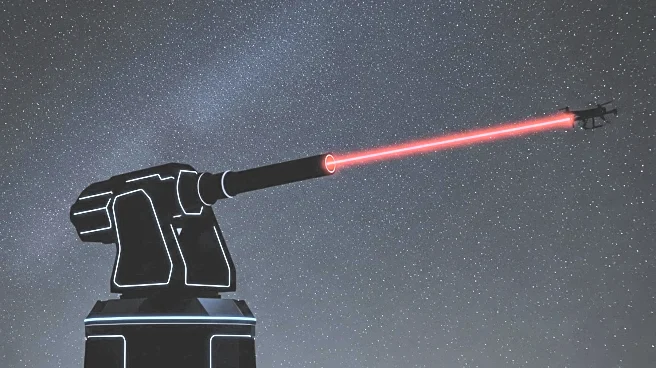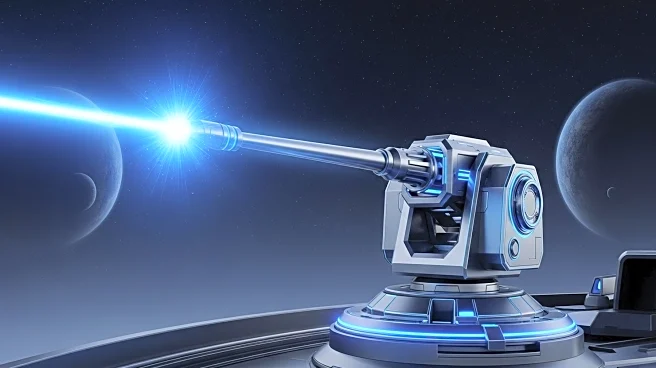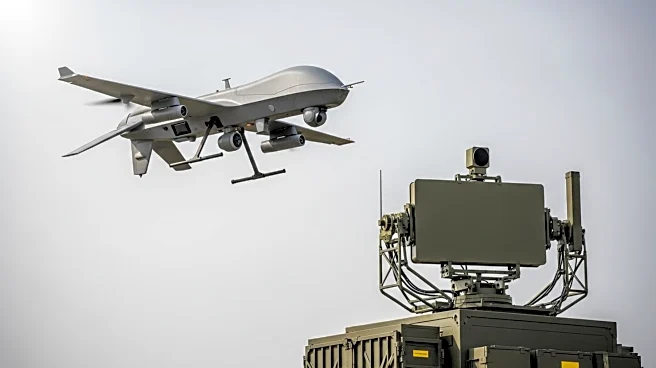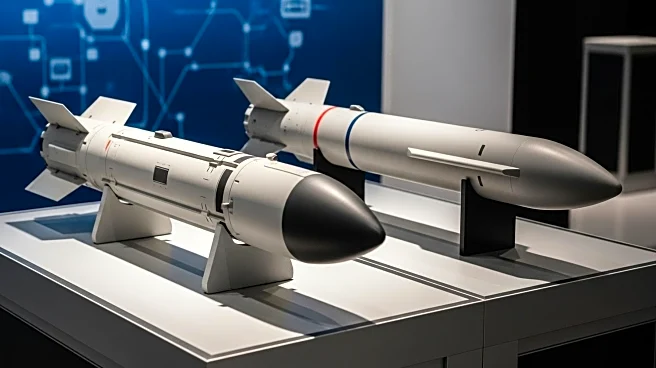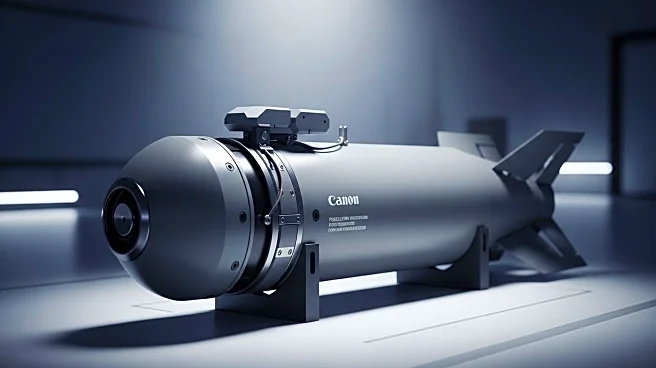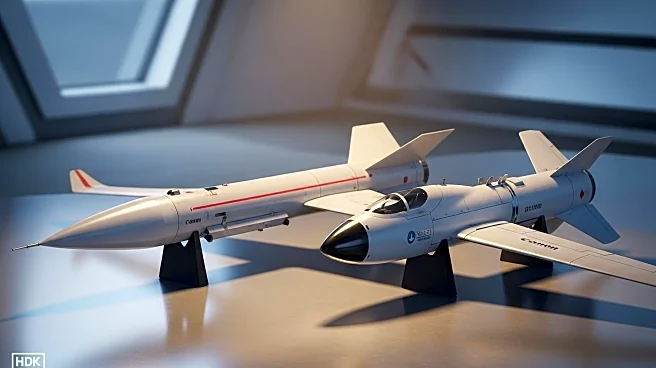What's Happening?
Electro Optic Systems (EOS) is upgrading its counter-drone laser system, named Apollo, to increase its kill rate from 20 to 50 targets per minute. This enhancement focuses on improving the motors to increase the speed at which the beam director can be slewed between targets. EOS has secured a €71.4 million deal with a European NATO member for a 100-kW laser system, with production and delivery expected to run into 2028. The system will be assembled in Singapore, with some components sourced locally in the client's country.
Why It's Important?
The upgrade of EOS's counter-drone laser system reflects the growing need for effective defense mechanisms against uncrewed air systems (UAS) swarms. As military forces prioritize rate of fire over engagement range, the ability to rapidly neutralize multiple targets becomes crucial. This development could enhance national security and defense capabilities, particularly for countries facing threats from drone technology. The system's local production also highlights the strategic importance of regional manufacturing in defense technology.
What's Next?
EOS anticipates securing a second customer commitment by the end of the year or by March at the latest. The company is focusing on industrializing the system to meet global demand, addressing bottlenecks such as the availability of laser engineers. The success of the Apollo system may lead to further advancements in laser technology for defense applications, potentially expanding its use to counter rocket, artillery, and mortar threats.
Beyond the Headlines
The development of advanced counter-drone systems raises ethical and legal considerations regarding the use of autonomous weapons in warfare. As technology evolves, discussions about the implications of automated defense systems and their impact on international security and warfare ethics are likely to intensify.
